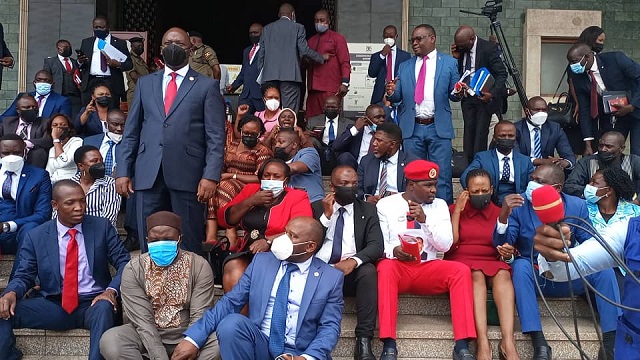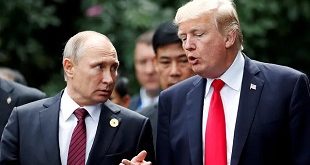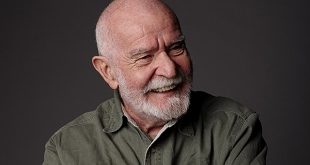
But do the goons torturing Ugandans and their NRM supporters care?
Kampala, Uganda | MUBATSI ASINJA HABATI | Opposition MPs made a bold statement on Feb.03 by marching out of a sitting plenary session of parliament in protest against, what they say, is increasing torture of Ugandans by security agents in ungazetted dungeons.
“We cannot sit in parliament while some of our colleagues are suffering in jails,” the Leader of Opposition (LoP) in parliament, Matias Mpuuga (Masaka Municipality) said as he led the walk-out straight from the dispatch box. He said the opposition MPs would stay away for two weeks.
The opposition MPs possibly hoped for at least two outcomes from their walk out; first that, even if just for a few minutes, the business of parliament would be interrupted if not stopped. That did not happen.
Instead the Deputy Speak of Parliament, Anita Annet Among, encourage David Bahati (Ndorwa West); the minister of State for Industry, to carry on business as usual.
The opposition MPs possibly also hoped that at least some conscientious protesters among their colleagues from the ruling party and the Independents would join them. That too did not happen. The question now is why?
Among those currently in detention and allegedly tortured, are two MPs Muhammad Ssegirinya (Kawempe North) and Allan Sewanyana (Makindye West).
But the two recent torture cases that have led Ugandans to fear the dark days of the regimes of then-presidents Idi Amin Dada (1971-79) and Milton Obote (1980-85) when soldiers and security agencies could pick up anyone, anywhere, at any time without explain and detain, toruture and kill many of them.
On Feb.01, the biggest opposition political party in parliament; the National Unity Platform (NUP) paraded its coordinator for Kasese District, Samuel Masereka, to the media with wounds all over his body. They said the wounds resulted from torture he experienced while in military detection in Mbuya CMI headquarters in Kampala. Masereka who was being supported to walk had bodily injuries on legs and feet. His back was spread with bruises of canes.
Masereka had been abducted from his home in Kasese on December 07, 2021. He said his abductors first took him to the Kasese Central Police station from where a “drone” omnibus van drove him at breakneck speed for two hours within Kasese town and later to Mbuya CMI headquarters. From Mbuya, Masereka said he was beaten in turns while being asked what NUP’s plan for Rwenzori was. For the 34 days he was detained, Masereka said he was being beaten every day, asked the plans of NUP, their source of funds, and threatened that he could be killed without trace.
In another case, a video circulating on social media sites shows an undressed Kakwenza Rukirabashaija; the internationally recognised writer of fiction, displaying alleged marks of torture he says he suffered in detention recently. The video showed Kakwenza’s bum, back, and thighs; all with scars that have recently healed. Those scars according to Kakwenza were inflicted on him through beatings while in military detention. Kakwenza says the bruises and scars are a result of beating meted out on him by his captors; a section of Uganda’s security forces.
Kakwenza was violently arrested in Kisasi, Kampala, held for weeks in unknown place where neither his family member nor his lawyer could be allowed to see him. He was later to briefly appear at his Iganga home where it was discovered he had been subjected to torture.
From Iganga, Kakwenza was again held incommunicado. Later on, he was arraigned in court and charged with offensive communication under the Computer Misuse Act in which he was accused of abusing President Yoweri Museveni and his son, Lt. Gen. Muhoozi Kainerugaba. While in Kitalya mini maximum prison, a medical officer counted over 60 freshly cut wounds on Kakwenza’s body resulting from beatings he experienced while incommunicado arrest.
Ruling party silent
Torture is prohibited under international law. Ugandan law also protects the right to freedom from torture. Article 24 of the 1995 Constitution of Uganda states: “No person shall be subjected to any form of torture, cruel, inhuman or degrading treatment or punishment.” To supplement this article of the Constitution, torture is also criminalised by the Prevention and Prohibition of Torture Act (2012).
In spite of the available legal framework and the human rights laws, Uganda’s security forces continue to torture suspects with impunity. The recent case of Kasese NUP coordinator, Kakwenza and others who have been subjected to torture show that holding individual security personnel who torture citizens accountable is still an uphill task as these are shielded by the regime.
As a protest repeated acts of torture and human rights violations in the country, the Leader of Opposition (LoP) in Parliament led a walk out of opposition legislators on February 3.
The LoP, Mathias Mpuuga, said the opposition will boycott parliament sittings for two weeks.
The Deputy Speaker Anita Among, said the appropriate solution would be for the LoP to come with a motion that seeks to debate and address the issue of torture. The deputy speaker reiterated that earlier on parliament had given Prime Minister Robinah Nabbanja two weeks to brief the House on allegations of torture. The two weeks will end on 8 February.
After the session, the Minister of ICT and National Guidance, Dr Chris Baryomnsi said the ruling government does not condone torture.
“If any suspect or person is tortured in an established prison, the security officers of that institution should be held accountable for their actions,” Baryomunsi said.
But allegations of torture in parliament are not new. On May 23, 2017, Kasilo County MP Elijah Okupa (FDC) made the following motion in parliament (in part): The third issue I want to raise is on Makindye Military Barracks. That is another place where torture has infiltrated and been meted on Ugandans. Honourable minister, we would like to know what is happening there. The committee should also interest itself in that place and go there.
“I am a victim of torture. I went through what Members are talking about here in 1988. Hon. Gutomoi has also been a victim. Hon. Mayende Dede, from your side, went through the same situation of torture one time. The honourable Dr Chris Baryomunsi knows what he went through and how I was protected in Jinja Police Station by fellow inmates. They said, “This is what happens here”. When we were commissioners, you know what happened.”
On August 14, 2021 President Yoweri Museveni addressed the nation on the issue of security force personnel that torture suspects. In a televised address, Museveni spoke tough against torturing suspects. He said officers who use torture to obtain information are “lazy”. He warned security forces against barking at or beating suspects, detaining suspects for long periods in jail and deporting foreigners without trial, saying it disadvantages the country.
To illustrate his point, in that address, the President asked for videos to be played of suspects arrested in the trial of the attempted assassination of former Chief of Defense Forces General Edward Katumba Wamala.
One video showed a suspect sobbing in court, saying he was beaten with various canes, which made him say things he should not be saying. Others showed a man with raw torture wounds on his back, a tortured man limping out of court, and police officer running after a woman and beating her repeatedly. Museveni said these were acts by individual officers and the failure of senior commanders.
“Beating captives [suspects] is wrong. Why? You undermine your case in court — when the court discovered that you got information through torture. Secondly, on account of beating, somebody may admit what is not true. Torture, assassination, et cetera, are used by lazy people that are not ready to do more work using gaps in the stories of the criminals if they are telling lies,” he said. Museveni promised to eliminate such torture.
Two days after the Presidential address against torture, the Inspector General of Police, Martins Okoth Ochola, issued a statement saying he had tasked the police’s Directorate of Human Rights and Legal Services to list all accused police officers for prosecution.
“There is no justification whatsoever under any circumstances or orders from a superior officer or public authority for torture,” he said in a statement issued on August 16, 2021.
But, almost six months later, not one security agent has been arraigned before any court for torturing suspects. Suspects continue to complain of being tortured while in detention. The police force has normalised beating up journalists whenever they want to hide human rights violations.
Several human rights reports, including some by the government’s Uganda Human Rights Commission, have ranked Uganda’s security forces including the police and Uganda Peoples Defence Force (UPDF) as the lead perpetrators of human rights violations particularly torture and cruel, inhuman degrading treatment or punishment.
Human rights activists now say President Museveni’s condemnation of torture allegedly committed by police and the armed forces was “cosmetic”. They want to see action taken on perpetrators of torture.
Livingston Sewanyana, Executive Director of the Foundation for Human Rights Initiative, said: “There’s still a class of people who are increasingly being untouchable, and the President needs them for his political survival. So, much as he comes out as strong, with warnings, he definitely does not live up to his words. And the way politics is played here, it is all about who has the president’s ear.”
Samuel Nsubuga, CEO of the non-government organization the African Center for the Treatment and Rehabilitation of Torture Victims, says the president needs to act.
“I would like those people who did that to the suspects to be prosecuted in the courts of law. There’s that gap which we really want the justice institutions to fill,” Nsubuga said.
Political activist and former FDC president, Dr. Kizza Besigye said the goal of torture is to scare Ugandans from demanding for a free and fair society.
“The people’s desire for freedom and fulfilment is far great than the terror any tyrant can project. The pictures of the Museveni junta’s recent torture victims like writer Kakwenza Rukirabashaija and Kasese District NUP Coordinator Samuel Masereka. These only prove the barbarism. That’s why we have the red card campaign to end such acts of torture,” Besigye said.
****
 The Independent Uganda: You get the Truth we Pay the Price
The Independent Uganda: You get the Truth we Pay the Price



